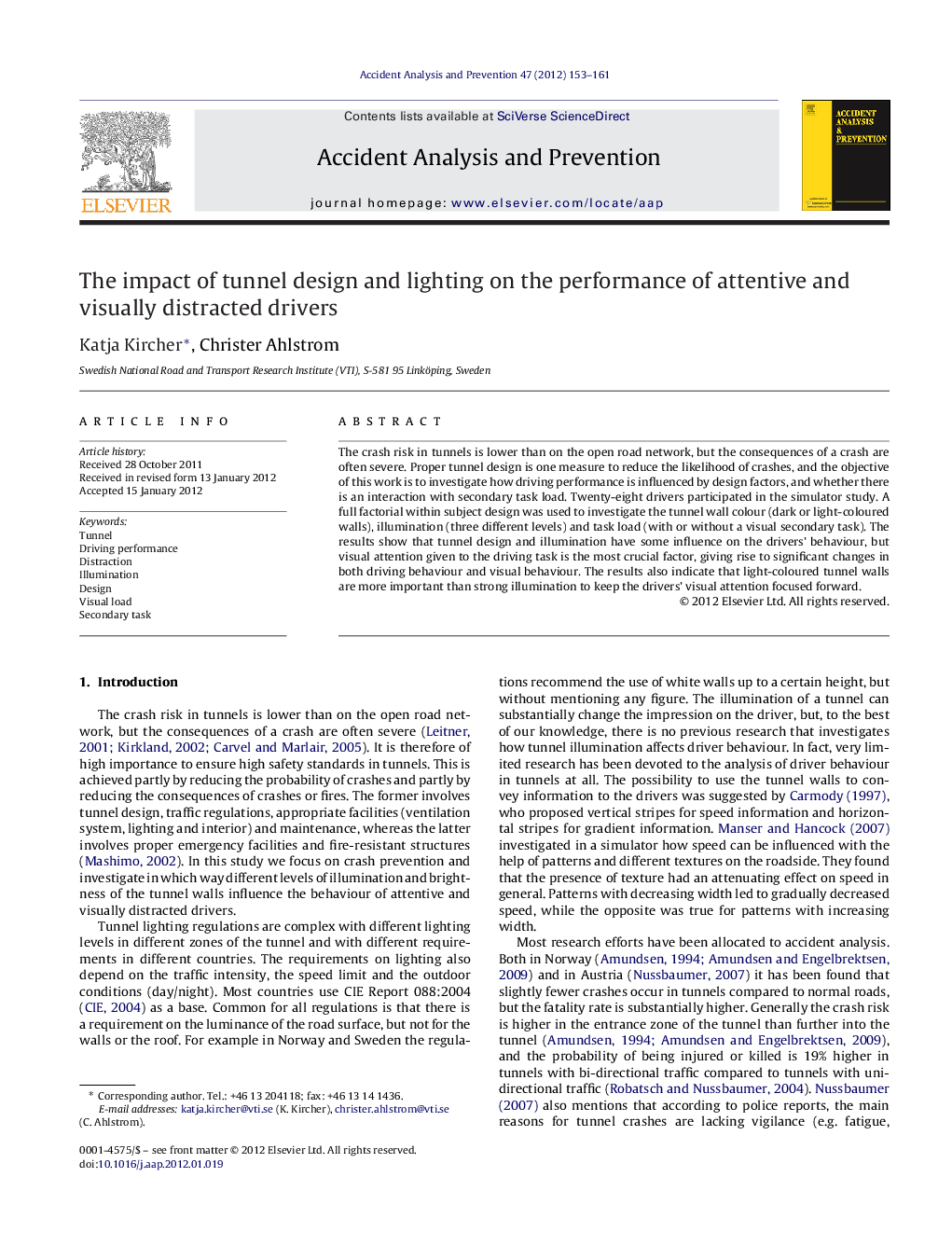| Article ID | Journal | Published Year | Pages | File Type |
|---|---|---|---|---|
| 572712 | Accident Analysis & Prevention | 2012 | 9 Pages |
The crash risk in tunnels is lower than on the open road network, but the consequences of a crash are often severe. Proper tunnel design is one measure to reduce the likelihood of crashes, and the objective of this work is to investigate how driving performance is influenced by design factors, and whether there is an interaction with secondary task load. Twenty-eight drivers participated in the simulator study. A full factorial within subject design was used to investigate the tunnel wall colour (dark or light-coloured walls), illumination (three different levels) and task load (with or without a visual secondary task). The results show that tunnel design and illumination have some influence on the drivers’ behaviour, but visual attention given to the driving task is the most crucial factor, giving rise to significant changes in both driving behaviour and visual behaviour. The results also indicate that light-coloured tunnel walls are more important than strong illumination to keep the drivers’ visual attention focused forward.
► Tunnel illumination and design were investigated for impact on driving performance. ► Those factors were combined with visual driver distraction in a simulator study. ► Driver attention had a higher impact on performance than tunnel design. ► Light-coloured walls are more effective than a very bright illumination.
